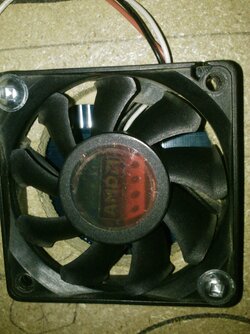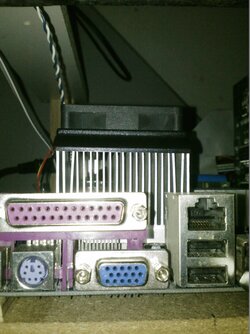- Joined
- Sep 7, 2013
- Thread Starter
- #21
Okay! I attached my spare 60mm fan to the back of the socket, and temps hit 40*C during prime95 
Quite a difference
EDIT: It turns out, that this mobo has the 4 holes for screw-type heatsinks!
Just noticed that today when I was making a case for it for more airflow.

Quite a difference
EDIT: It turns out, that this mobo has the 4 holes for screw-type heatsinks!
Just noticed that today when I was making a case for it for more airflow.
Last edited:



 ) and blows it onto the motherboard.
) and blows it onto the motherboard. ).
).
